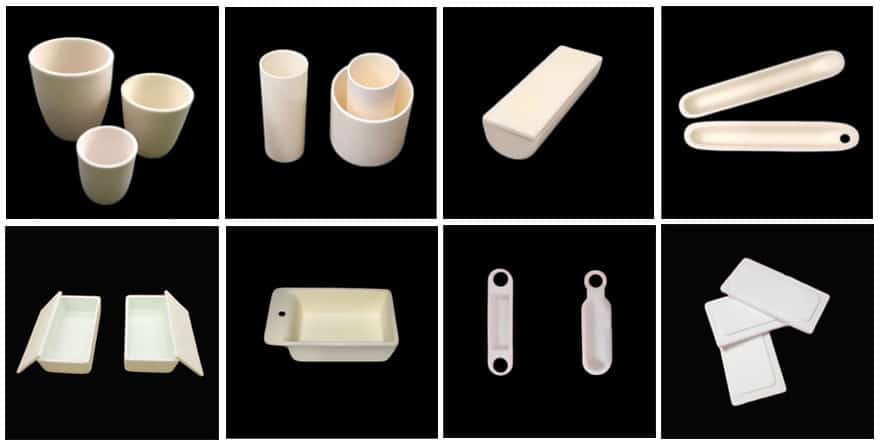Crucibles, an important part of chemical equipment, are containers for melting and refining metallic liquids and heating solid-liquid reactions.
There are various types of crucibles, among which ceramic crucibles are an important part of crucibles. Ceramic crucibles can be divided into quartz crucible, corundum crucible, boron nitride crucible, zirconium oxide crucible, etc. according to raw materials, and different crucibles are used at different temperatures.
1.Quartz ceramic crucible is a ceramic crucible made of high purity fused silica.
It has the characteristics of fine structure, low thermal conductivity, low thermal expansion coefficient, good thermal shock stability, good electrical properties, and good chemical resistance, etc. And widely used in the glass deep processing industry, metallurgical industry, electronic industry, chemical industry, aerospace, and other fields. Generally speaking, quartz ceramic crucible is used below 1200℃.
2. Alumina crucible, is usually called corundum crucible when the alumina content exceeds 95%. Alumina crucibles are robust and resistant to fusion, high temperature, acid and alkali, cold and extreme heat, and chemical corrosion, and are suitable for anhydrous melting of samples of weakly alkaline substances such as Na2CO3. Depending on the application conditions, alumina crucibles can be applied below 1700°C.
3.Commonly used types of boron nitride include cubic boron nitride (C-BN) and pyrolytic boron nitride (P-BN).
The boron nitride crucible usually consists of P-BN. P-BN ceramics have good heat resistance, thermal stability, thermal conductivity, and high-temperature dielectric strength, making them ideal for heat dissipation and high-temperature insulation. p-BN crucibles are commonly used for smelting metals and semiconductors and can be used in a vacuum at temperatures up to 1800 degrees C.
4. Zirconium oxide has a higher melting point than zirconium and is one of the most refractory materials in nature. Even when heated to 1900°C, zirconia does not react with molten aluminum, iron, nickel and platinum metals, silicates, and acid slag, so zirconia crucibles can successfully smelt precious metals such as platinum, palladium, ruthenium and cesium and their alloys.
5.Yttrium oxide ceramics are high-performance ceramics with excellent heat resistance, corrosion resistance, and high-temperature stability. The melting point of yttrium oxide is greater than 2400°C, and it is difficult to react with some active metals (such as Ti, Al, Hf, Nb, etc.) at high temperatures. The crucible has the potential to melt Ti and Ti alloys, or any oxygen-sensitive melting process. However, the high melting point of yttrium oxide makes it difficult to process. Because yttrium oxide itself is very brittle, the crucible may break if heated or cooled too quickly.
Ceramic Parts India Inc.CO., Ltd, we are a global ceramics tubes manufacturer and supplier, alumina tubes and crucibles are shipped worldwide, please visit our website for more details. www.ceramicpartsindia.com
